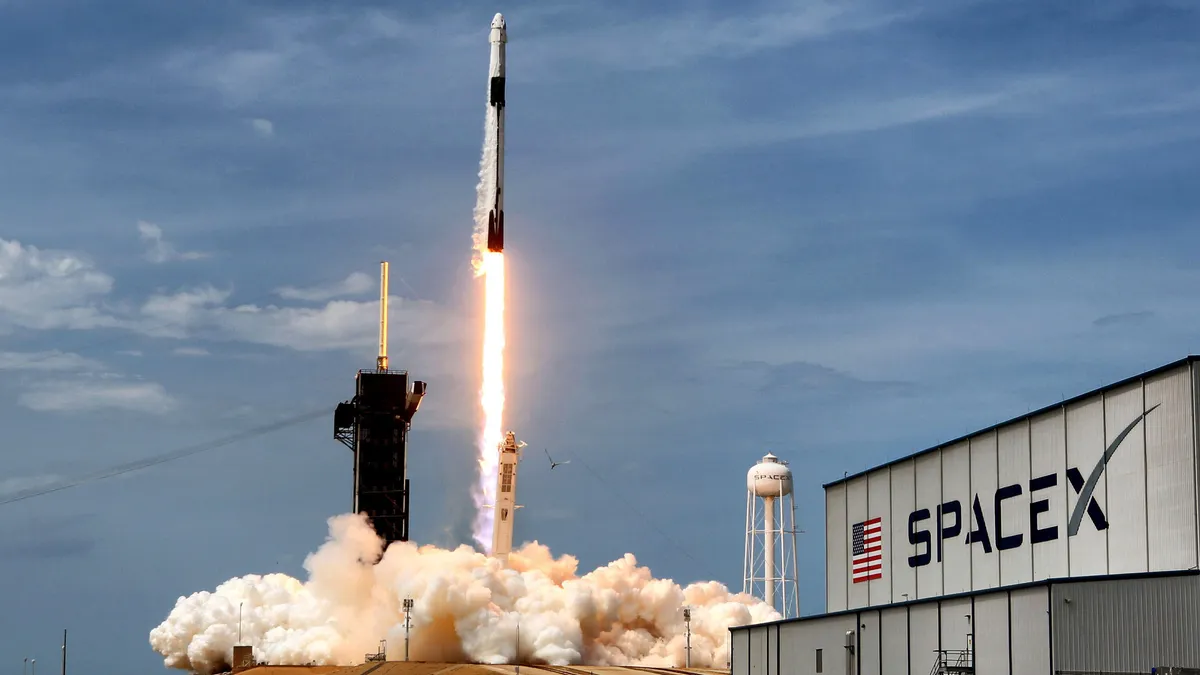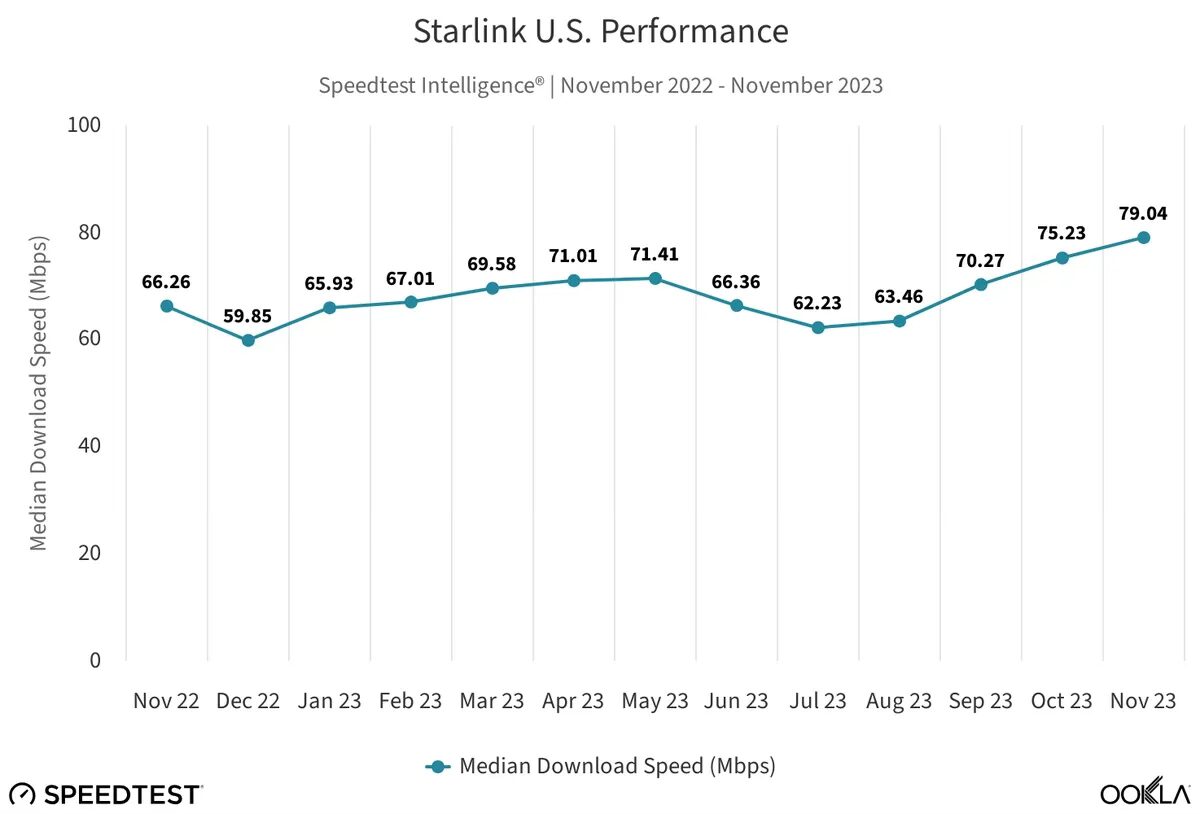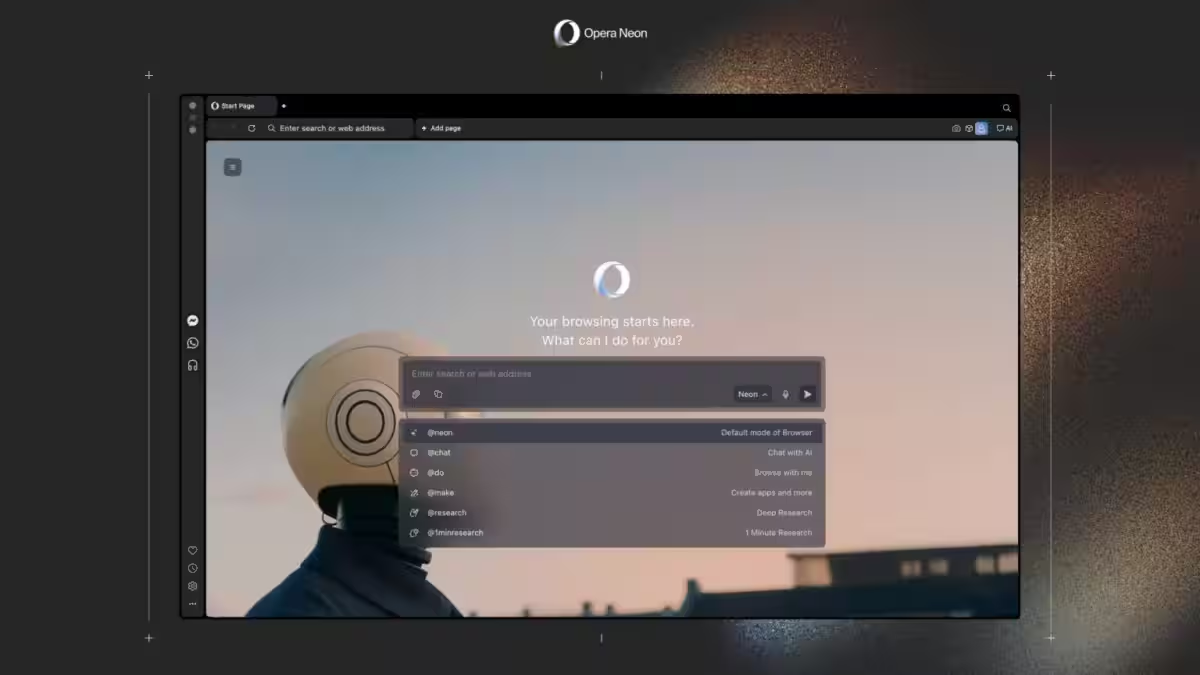Starlink promises speeds of up to 2Gbps – 25 times faster than current speeds

SpaceX, which owns satellite internet service Starlink, said it plans to increase speeds to 2 Gbps. That’s more than 25 times the average speeds users in the U.S. currently receive.
Current speeds and future plans
According to Ookla speed tests, the average download speed for Starlink users in the US is 79 Mbps and upload speeds are 10 Mbps. However, SpaceX president Gwynne Shotwell said at Baron Investment’s annual conference that the new version of Starlink satellites will be able to offer users speeds of up to 2 Gbps.
Shotwell said the improvements will come from smaller beams, increased capacity, and reduced data latency. However, she did not give an exact timeline for the introduction of the new technologies.
She said.
Technology Breakthrough
For now, Starlink users can achieve speeds of 1 Gbps if they purchase multiple satellite dishes. One such dish costs $349. However, the company plans to eliminate the need for multiple devices. Instead, both the satellite signal and reception equipment will be improved, allowing speeds of 1-2 Gbps with a single dish.
Shotwell compared Starlink’s development process to Moore’s Law, which involves doubling computing power every two years. She also mentioned the successful test launch of the Starship spacecraft, which can launch larger satellites into orbit. This gives confidence in the company’s ability to support faster internet speeds.
Mukonovych.

User growth and infrastructure challenges
In the last year, Starlink’s user base has grown from 2 million to 4 million, but speeds are increasing at a much slower pace. Between November 2022 and November 2023, download speeds in the U.S. only increased from 66 Mbps to 79 Mbps, well below the minimum broadband standards set by the Federal Communications Commission (FCC).
At the same time, download speeds in the U.S. have only increased from 66 Mbps to 79 Mbps, well below the minimum broadband standards set by the Federal Communications Commission (FCC).
As the number of users grows, the challenge of maintaining high speeds becomes more difficult. Experts point to the limited radio spectrum, which makes it difficult to serve all users in a coverage area.
As the number of users grows, the challenge of maintaining high speeds becomes more difficult.
Satellite Fleet Expansion
Starlink plans to significantly expand its orbital footprint, increasing the number of satellites from the current 6,600 to 30,000. In October, the company filed a request with the FCC to use new radio frequency bands and lower the orbital altitude of the satellites to improve performance.
The change in leadership at the FCC following Donald Trump’s presidential election victory could play into Starlink’s hands. The newly elected head of the commission, Brendan Carr, is likely to support the company’s requests, which will speed up the company’s plans.
What’s in store for users.
An open question remains: will current Starlink users with existing equipment be able to access the new speeds, or will new equipment need to be purchased? Shotwell said the company plans to conduct up to 400 Starship launches in the next four years to put more satellites into orbit.
Starlink continues to strive to revolutionize satellite internet, but realizing its ambitious plans will depend on technological solutions and regulatory frameworks.
Starlink said it will continue to seek to revolutionize the satellite internet, but the realization of its ambitious plans will depend on technological solutions and regulatory frameworks.








